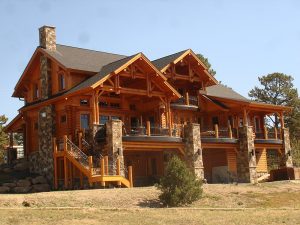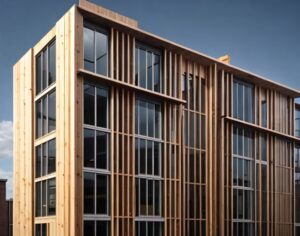Floating Homes in Coastal Florida: Regulatory Landscape
We are currently in discussions with Honka and MEYER Floating Solutions on designing floating single family CLT homes. The first location contemplated will be in Florida. This article covers some of the regulatory considerations that are required for unique homes like this. Floating homes in Florida straddle the line between boats and permanent structures. They use utilities, remain docked, and stay accessible by a fixed pier. Because of this, multiple authorities and codes regulate them simultaneously.

1. Flood and Coastal Safety Regulations
Coastal floating homes must comply with flood-zone rules and base flood elevations. FEMA’s National Flood Insurance Program (NFIP) often applies. We need to address anchoring, uplift resistance, and lateral movement during storms. The design must meet flood-resistant construction standards.
2. State Permits through Florida DEP
The Florida Department of Environmental Protection (DEP) regulates floating structures. The DEP requires permits for docks, floats, and platforms in coastal or wetland areas. Local governments may also demand registration under state law.
3. Building Code Requirements
If a floating home qualifies as a “structure,” building-code rules apply. We must design for hurricane winds, structural loading, and egress. Building plans also include fire safety, energy, and accessibility. Local building departments decide whether a floating unit is a vessel or a true building.
4. Utilities: Electrical, Plumbing, and Mechanical
The national electrical code governs shore power and dock wiring. Article 555 of NEC covers marinas, docks, and floating buildings. We ensure proper grounding, disconnects, and GFCI protection. Meanwhile, plumbing connections must meet state and county sanitary standards.
5. Federal Waterway Permits
Permanent structures over aquatic territory may trigger permits from federal agencies. The U.S. Army Corps of Engineers may require Section 10 or Section 404 permits. The U.S. Coast Guard sometimes reviews these structures for navigation safety.
6. Local Marine-Zoning and Mooring Ordinances
Cities and counties adopt rules on floating-home dwellings. Officials regulate mooring, anchorage, and permitted locations. Health departments also weigh in on sewer or sanitation connections. Municipal codes may explicitly ban, limit, or define floating-home living.

Practical Permitting Checklist
We use this checklist during planning:
-
Draft a detailed site and mooring plan
-
Document flood elevation and storm-resistance strategy
-
Prepare full building plans
-
Develop electrical and utility-connection plans
-
Submit sewer or sanitation system designs
-
Apply for state (DEP) and federal water-structure permits
-
Obtain local occupancy approval or registration
Key Considerations
First, we clarify that the unit is a “structure” as opposed to a “vessel”—this decision affects which regulations apply. Second, flood-zone designation (especially V-zones) can dramatically affect the design. Third, every county or city has distinct mooring and docking rules. We begin with a pre-application meeting at the local building department. Then coordinate with DEP to determine required marine permits. Secure contractors for electrical and plumbing that know marina-specific codes.











